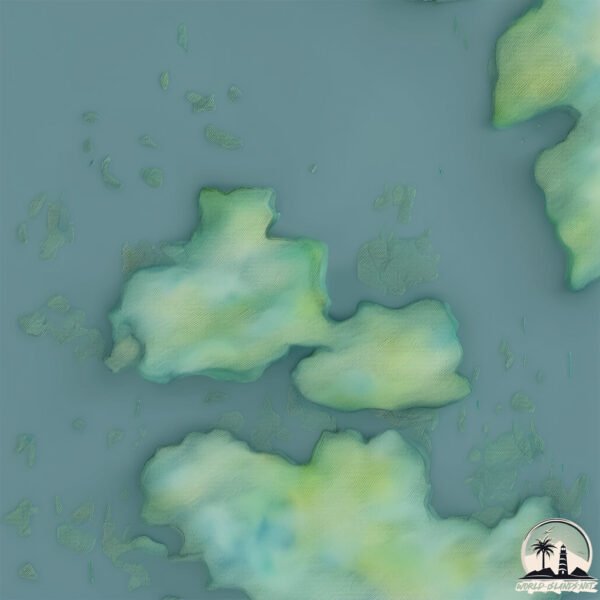Welcome to Kalau , a Temperate island in the South Pacific Ocean, part of the majestic Pacific Ocean. This guide offers a comprehensive overview of what makes Kalau unique – from its geography and climate to its population, infrastructure, and beyond. Dive into the details:
Geography and size of Kalau
Size: 18.7 km²Coastline: 39.6 kmOcean: Pacific OceanSea: South Pacific OceanContinent: South America
Kalau is a Medium Island spanning 19 km² with a coastline of 40 km.
Archipel: –
Tectonic Plate: South America – A major plate covering the South American continent and part of the Atlantic Ocean, known for the Andes mountain range and significant seismic and volcanic activity.
The geographic heart of the island is pinpointed at these coordinates:
Climate and weather of Kalau
Climate Zone: TemperateClimate Details: Subpolar Oceanic ClimateTemperature: Cold Summer
Climate Characteristics: Predominantly cold with cool summers and no dry season. Often found in coastal areas at higher latitudes or on islands.
Topography and nature of Kalau
Timezone: UTC-04:00Timezone places: America/La_PazMax. Elevation: 15 m Mean Elevation: 8 mVegetation: Evergreen Broadleaf ForestTree Coverage: 78%
The mean elevation is 8 m. The highest elevation on the island reaches approximately 15 meters above sea level. The island is characterized by Plains: Flat, low-lying lands characterized by a maximum elevation of up to 200 meters. On islands, plains are typically coastal lowlands or central flat areas.
Dominating Vegetation: Evergreen Broadleaf Forest
Vegetation: 6 vegetation zones – Very Highly Diverse Island
Infrastructure and Travelling to Kalau
Does the island have a public airport? no .
Does the island have a major port? no .
The mean population of Kalau is 1 per km². Kalau is Uninhabited. The island belongs to Chile .
Continuing your journey, Taggart is the next notable island, situated merely km away.
Island Of The Dolls | HORROR | Full Movie in English
A journalist travels to the mysterious Island of the Dolls, where she uncovers dark secrets and encounters a deadly curse linked to ...
Island Of The Dolls | HORROR | Full Movie in English
A journalist travels to the mysterious Island of the Dolls, where she ...
A journalist travels to the mysterious Island of the Dolls, where she uncovers dark secrets and encounters a deadly curse linked to ...
100 Hari Minecraft Deserted Island
Aku Bertahan Hidup 100 Hari di Minecraft Tapi Deserted Island!! • Di ...
Aku Bertahan Hidup 100 Hari di Minecraft Tapi Deserted Island!! • Di Video kali ini aku akan mencoba bertahan hidup di Minecraft ...
Komodo Island - Pulau Naga Purba Paling EPIC di Labuan Bajo, Indonesia
Walaupun tak jauh dari Malaysia, tapi Labuan Bajo ni serius lain gila! ...
Walaupun tak jauh dari Malaysia, tapi Labuan Bajo ni serius lain gila! dengan Naga Komodo Island, snorkeling dengan Manta ...
Chile is classified as Emerging region: G20: Group of Twenty – Major economies comprising both developed and emerging countries, representing the world’s largest economies. The level of income is Upper middle income.
News – Latest Updates and Headlines from Kalau
Stay informed with the most recent news and important headlines from Kalau. Here’s a roundup of the latest developments.
Loading...
Please note: The data used here has been primarily extracted from satellite readings. Deviations from exact values may occur, particularly regarding the height of elevations and population density. Land area and coastline measurements refer to average values at mean high tide.

